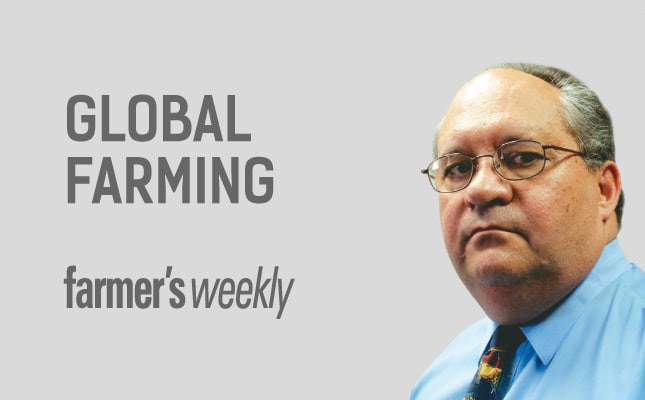
Farming differs from many other businesses in that both the production (yield) and price of the products are highly variable.
Changes in climate and markets can result in correct decisions having negative effects. Equally, in some cases, the wrong decisions can produce a good outcome!
READ The big problem with SA’s small farms
The past season once again illustrated how risky farming is. Summer grain farmers with two failed crops in a row will find it difficult to recover. Indeed, some will not be able to get production credit for this year.
Production cost is currently at such a level that a farmer can spend more than the value of the farmland per hectare planted. Clearly, a failed crop will result in a sharp increase in debt.
The effect of the drought was equally severe for many livestock farmers. Extensive livestock farmers had to feed their livestock with scarce and very expensive hay and other products. Thanks to Agri SA and various others, many farmers were able to save their core breeding herds.
Organised agriculture has spent years working with the authorities to put in place a practical disaster management system, mostly without success. In South Africa, the only people who can and will do something to manage risks for farmers are the farmers themselves.
Even the agribusinesses, whose total income is earned within the agricultural sector, were, with a few exceptions, lax in contributing to drought funds.
Building cash and feed reserves
There are a few ways in which farmers can manage risk. An emergency fund makes good sense. Farmers can usually earn a higher income on capital invested in their own farming operation than they can get from other investments.
All the same, it is difficult for farmers to create a cash reserve. But an emergency fund does not have to be a cash fund. It can also be an unused credit facility.
Farmers should not view the credit limit set by the banks as a goal that must be reached as soon as possible. Any credit ‘reserves’ can help farmers survive a disaster year.
READ Tips for producing low-cost livestock feed
For livestock farmers, emergency feed reserves can help to tide them over a drought. Those who regularly buy lucerne and other hay can enter into contracts with the sellers. Farmers who did so in 2015 saved themselves a great deal of money.
The Johannesburg Stock Exchange operates a well-regulated agricultural futures market for summer grain, oilseeds and winter grain, and a fledging market for beef. Producers and users of grain can use Safex to hedge their prices.
There are a few farmers who do so quite successfully and there are also some who speculate on Safex, sometimes successfully and sometimes not. In a free-market environment, farmers who choose to ignore Safex are as much speculators as those who actively speculate on it.
Every year, the market provides windows of opportunity for grain producers and grain users to hedge favourable prices. An example is the recently launched A-grade beef futures. Although these seem to be slow at picking up speed, they should create enough activity in due course for farmers to use them.
As individual enterprises are highly volatile, it makes sense to combine several enterprises. This also exploits the complementary benefits between the enterprises. Intensive livestock producers, who also produce cash crops, are better able to hedge against high grain prices by using their own farm-produced grains.
Generally, the price cycles for livestock and grain oppose each other, which hedges farmers against price changes.
Farmers who do not take steps to limit the possible effect of adverse price and production movements on their farming businesses face a real risk of losing all.
The prudent farmer might not earn the highest short-term profit, but will remain sustainable in the long run.




